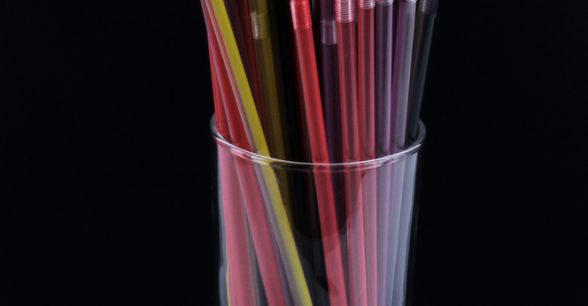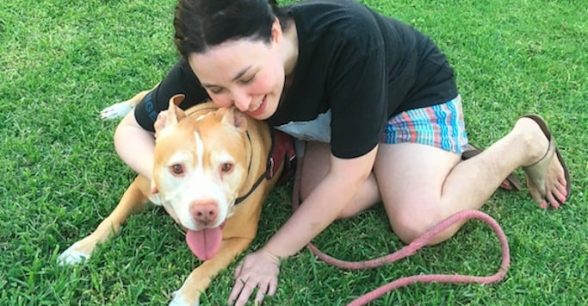How the Film “Wonder” is Commercializing Facial Difference
As a writer and activist, there’s no feeling quite like finding out a professor at a well known university used my work in their class to start a discussion about disfigurement and equality for individuals living with physical differences. I received an email from the professor with follow-up questions from her students: What was it like to undergo surgery that altered my appearance? Did I think I would’ve been conventionally beautiful had I not been born with a craniofacial disorder? The email concluded with the professor asking if I had read Wonder by R.J. Palacio — a book about a young boy named Auggie with Treacher Collins syndrome — and praising the story for its perspective.
Perhaps the professor’s inquiry shouldn’t have been too shocking, because aside from the commercialization of disfigurement and facial differences by the entertainment industry, disfigurement is an issue not many people are exposed to. Those of us living with facial differences or disfigurement are often only portrayed as something to be feared or pitied.
This issue is prevalent in Wonder — now a forthcoming movie based on the book. As part of the film’s promotion, Lionsgate is running a marketing campaign to promote the movie and its message of “choosing kind.” Part of their #CHOOSEKIND campaign allows classrooms across the country to become “Certified Kind,” meaning children complete tasks and are rewarded for their acts of kindness. Students can design a t-shirt portraying what inclusion and kindness look like, with the winner earning $150 and the opportunity to have their design printed on shirts at GAP Kids. Another challenge asks classrooms to watch a video by the makers of Wonder (none of whom have craniofacial conditions) and identify what principles they live by. For this challenge, winning students are rewarded with an advance screening of the movie at their local theater. The final challenge is a kindness jar, where teachers put a marble in a jar whenever students perform acts of kindness. For this challenge, five classrooms win a $50 pizza gift card and $500 donation to a charity of the winner’s choice.
While I can appreciate the concept behind encouraging kindness, rewarding individuals for being nice — especially being nice to people with facial differences and physical differences — shouldn’t need to be encouraged. It should be expected.
In addition to rewarding students with prizes, CCA Kids (Children’s Craniofacial Association), an organization that has partnered with Wonder, is offering to bring a “Real-Life Auggie” to schools across the country. To do this, they’re enlisting children with craniofacial conditions and facial disfigurements to go into schools or to contact children at schools via Skype or letters. On the organization’s website, it states, “We are contacted by more and more Elementary and Middle schools who want to be connected with a ‘Real-Life Auggie, … Many receive standing ovations at the assemblies they are part of when they visit the schools.”
Even though directors were unable to find a child living with Treacher Collins, or even just a facial difference, to play the role of Auggie in the film adaptation, they’re now asking children to attend schools and share their stories. This desire to capitalize on the commercialization of this condition is sickening.
Campaigning to send “Real-Life Auggies” or “real life children with disfigurements/craniofacial differences” to schools across the country defeats everything this book is supposed to stand for. Instead of promoting inclusion, it further objectifies people living with these conditions, and portrays them as “other.” It presents individuals with disfigurements not as equals, but as someone to be pitied. It’s commercialized inspiration porn, at best. Not to mention, a “real-life Auggie” sounds like an exotic animal you’d see displayed somewhere, not a child living with a medical condition. This kind of language has real consequences for real people.
I’ve experienced these consequences firsthand. Ever since Wonder came out and I began writing about my own experience living with a craniofacial disorder, I’m frequently compared to Auggie and told to read Wonder. But Wonder is a fictional story, written by an author who has zero personal experience with the subject matter.
After a middle school student read an essay I wrote, she did a report on Wonder and compared me to the main character, saying I must have insight into what it’s like being “deformed.” Of course I have insight. I’m real. And so are the kids these organizations want to send into classrooms as an example of kindness. To be compared to a fictional character and have my experience and my insight come second to an author with no personal experience on the issue is appalling. Spreading kindness may have been the goal of these campaigns, but ultimately it’s the celebration of ignorance that was achieved.
About Rooted In Rights
Rooted in Rights exists to amplify the perspectives of the disability community. Blog posts and storyteller videos that we publish and content we re-share on social media do not necessarily reflect the opinions or values of Rooted in Rights nor indicate an endorsement of a program or service by Rooted in Rights. We respect and aim to reflect the diversity of opinions and experiences of the disability community. Rooted in Rights seeks to highlight discussions, not direct them. Learn more about Rooted In Rights




Even people without cranio-facial deformaties all look unique in their own personal way… Step off the gas… Sleep on it……..it may help it ways you may not appreciate yet… I hardly believe this is being made into a movie to Encourage Differences ( negatively)…. just saying…… but I stand behind and support you
Although you do not like the “Choose Kindness” campaign, as a career teacher of almost three decades I can tell you that it is needed in schools. No, we should not have to teach it, but the reality of today’s society is that we often do. Empathy is not something that is as widespread as you would think. The changing attitudes of the country have created an insular, “me-focused” mentality that is not used to looking at how someone else is affected. With some nudging and demonstration, though , the light eventually dawns for most. I hope for a day in which students will simply see each other as people regardless of any exterior physical characteristics.